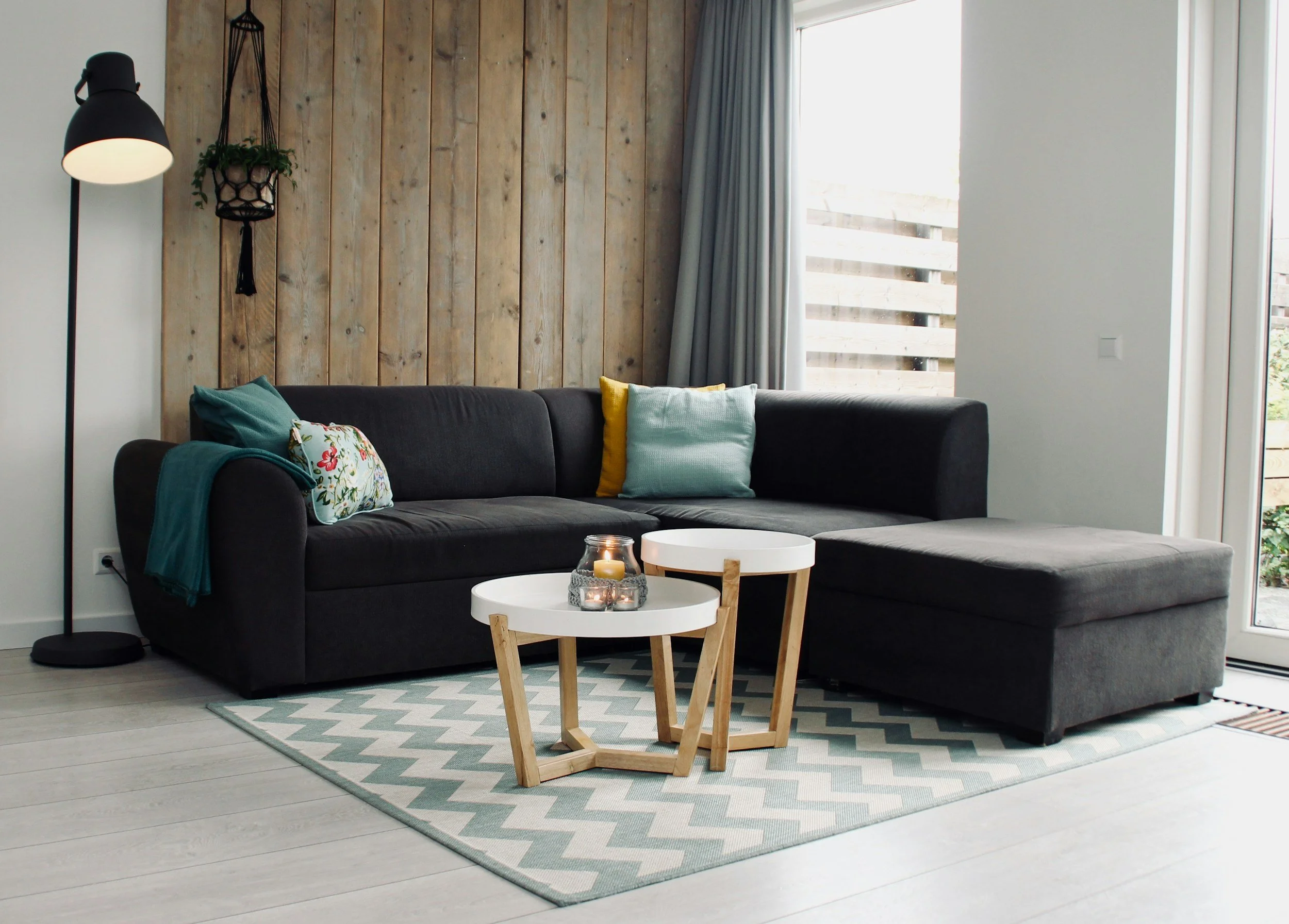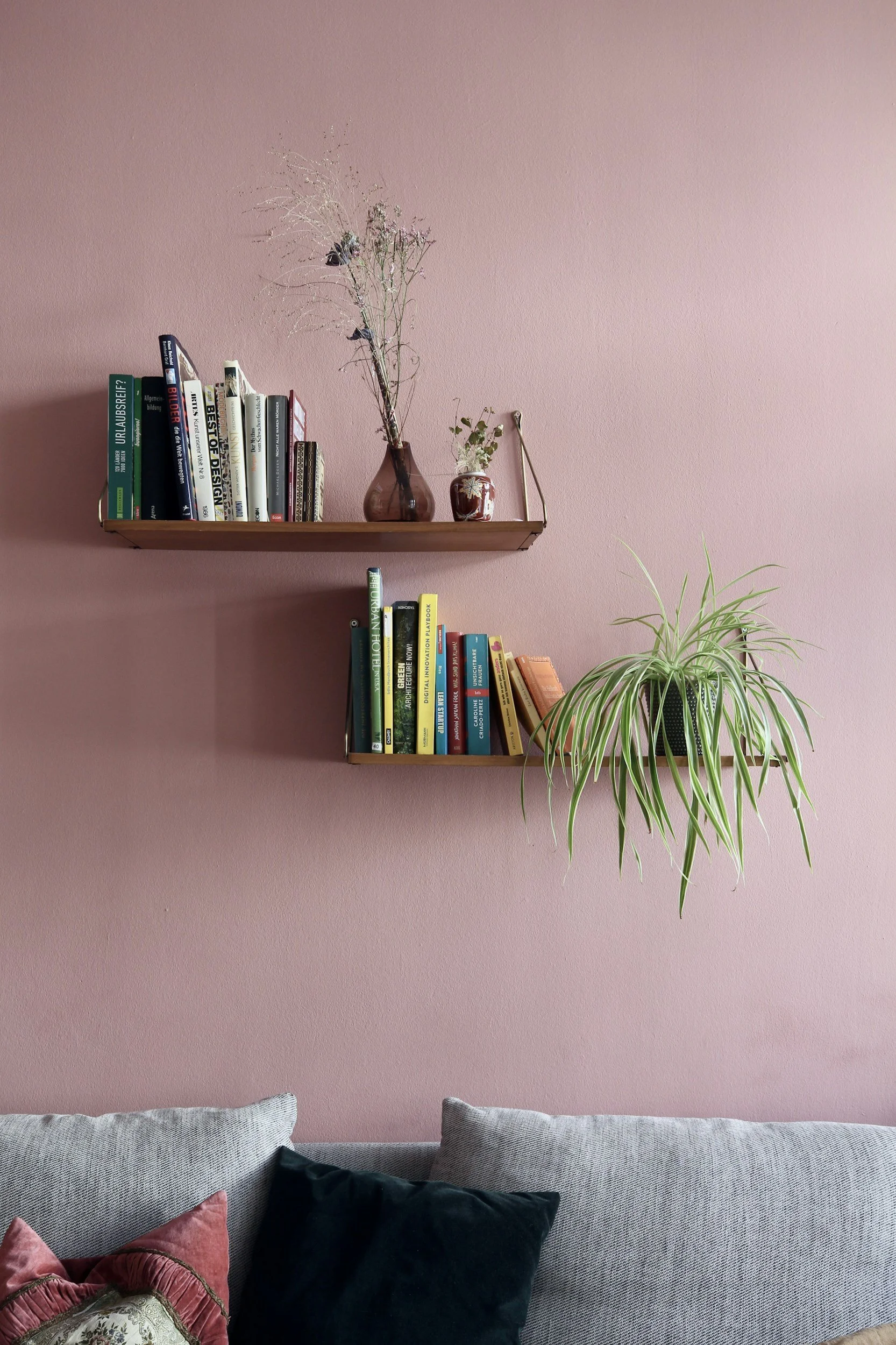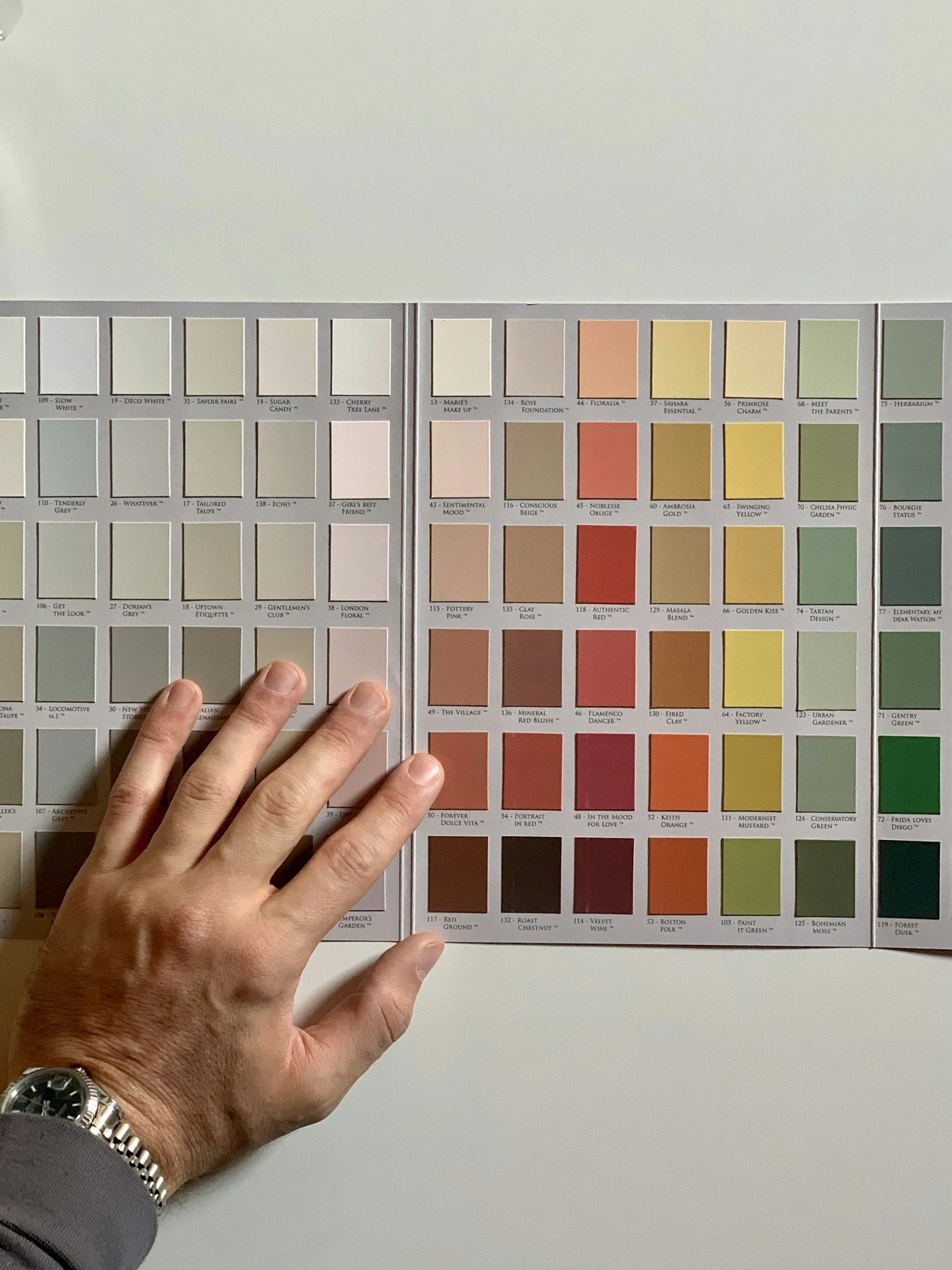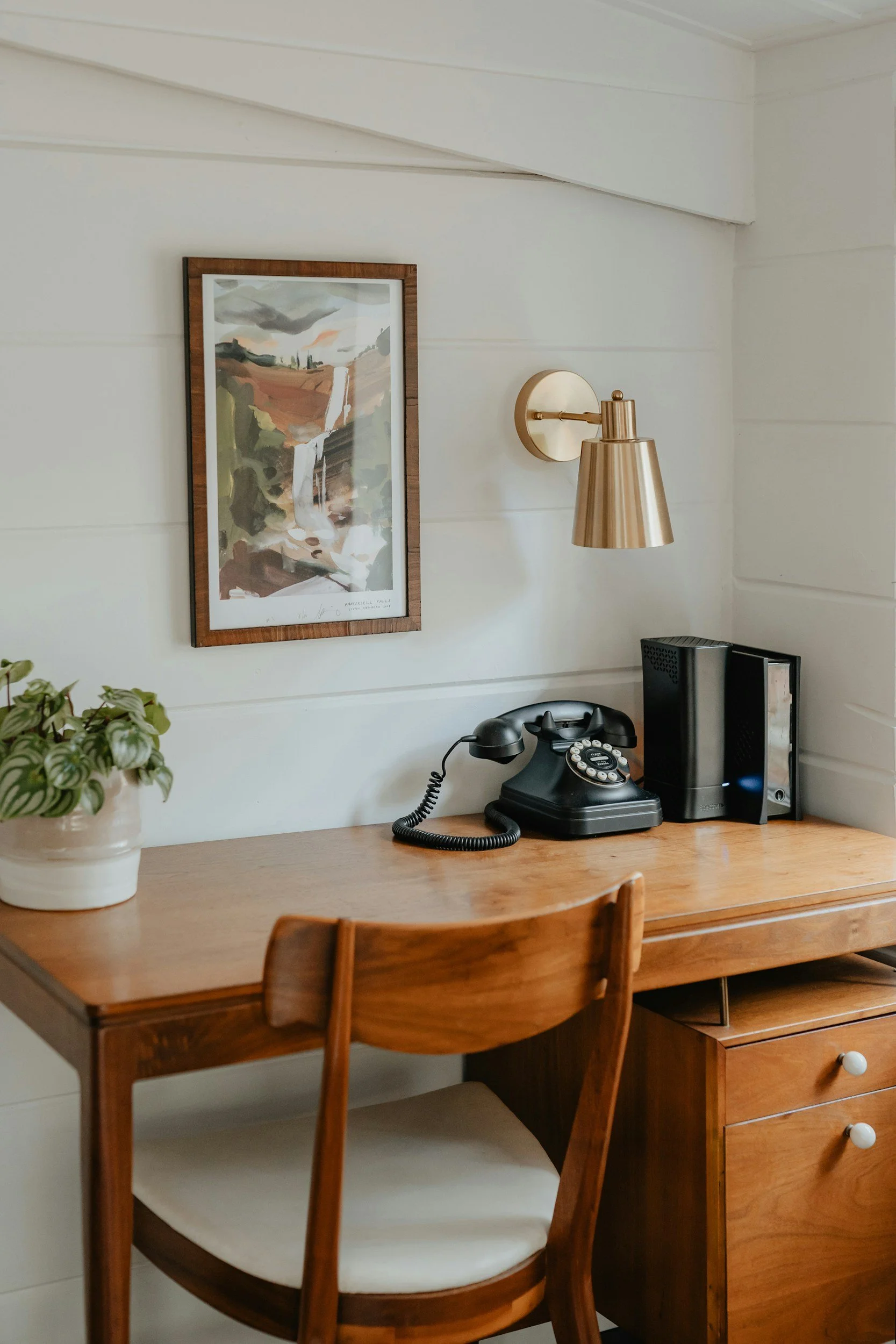Top 5 Interior Design Mistakes People Make in Small Spaces—And How to Fix Them
If you’ve ever tried to decorate a small space—whether it’s a studio apartment, a compact bungalow, or a 400-square-foot vacation rental—you know it’s not just about picking pretty furniture. Small spaces require strategy. And when that strategy is missing, things go sideways fast.
The sofa doesn’t fit. The storage feels like an afterthought. The lighting is all wrong. And suddenly your home feels more like a puzzle than a sanctuary.
The good news? Most small space challenges can be traced back to a few common design missteps—and they’re all fixable. In this post, I’m breaking down the top 5 interior design mistakes I see over and over again (especially here in Asheville where charm often comes with quirks), and how to avoid them with confidence.
Mistake #1: Choosing Furniture That’s Too Bulky
This one’s a classic. When your furniture is too big for the room, the space feels cramped, heavy, and hard to move through.
Why It Happens:
You’re shopping based on style, not scale.
Big box stores cater to standard-size homes.
You're trying to “fill” the room instead of letting it breathe.
How to Fix It:
Measure everything before purchasing. Use painter’s tape on the floor to outline the footprint of potential pieces.
Opt for apartment-scale furniture or brands that cater to small space living.
Look for slim silhouettes and raised legs—these allow light to travel beneath furniture, which helps the space feel larger.
Real Example:
One of my Asheville clients had a stunning oversized leather sectional they loved—but it overwhelmed the living room in their 650-square-foot bungalow. We swapped it for a two-piece modular loveseat with a hidden storage ottoman, and suddenly the space opened up. They still had room to lounge—but now they had flow, too.
Mistake #2: Underutilizing Wall Space
In small homes, the vertical plane is often your best friend. And yet most people don’t think beyond eye level.
The Consequences:
You miss out on valuable storage.
Rooms feel smaller because the eye isn’t drawn up.
Clutter builds on floors and low surfaces.
Design Solutions:
Install wall-mounted shelving or peg rails for items like books, dishes, and plants.
Use tall, narrow storage pieces instead of wide, bulky furniture.
Hang curtains close to the ceiling to create the illusion of height.
Bonus Idea:
In kitchens or studios, a simple wall-mounted rail system can hold utensils, art supplies, or even plants—freeing up valuable counter space and adding charm.
Pro Tip: Open shelving isn’t just for storage—it can also act as décor. Display beautiful or functional items, and style with intention.
Mistake #3: Playing It Too Safe with Color and Style
There’s a common misconception that small spaces should be white, neutral, and minimal. And while light colors can open a room, a lack of visual interest can make a space feel bland or uninspired.
What Happens:
Everything feels “meh,” even if it's technically cohesive.
The space lacks personality or charm.
You don’t actually love spending time there.
How to Add Personality (Without Overwhelming):
Choose a cohesive color palette and repeat it in soft layers—think neutrals with one bold accent like olive green, clay, or mustard.
Use texture (linen, leather, wool, rattan, metal) to add depth without adding clutter.
Incorporate statement pieces like an oversized mirror, patterned rug, or vintage artwork to ground the room.
Asheville Inspiration:
In one small guesthouse project, we painted the bathroom ceiling a dusty plum and used woodgrain peel-and-stick wallpaper behind the bed. The space still felt light and airy—but it had soul.
Mistake #4: Relying on Overhead Lighting Alone
Lighting is one of the most transformative tools in a designer’s toolkit—but most homes come with one ceiling fixture per room and that’s it.
What That Means:
Your space lacks dimension and mood.
It’s hard to relax or entertain.
Shadows can make already-small rooms feel smaller.
The Fix:
Use a layered lighting plan:
Ambient Lighting – ceiling lights or sconces to light the space overall.
Task Lighting – lamps for reading, working, or cooking.
Accent Lighting – string lights, LED strips, or candles for mood.
Small Space-Friendly Options:
Plug-in sconces mounted near the bed or sofa free up surface space.
Smart bulbs allow you to change brightness and tone for different activities.
Mirrors placed across from windows bounce natural light deeper into the space.
Reminder: The coziest, most inviting rooms usually have at least three light sources.
Mistake #5: Skipping Layout Planning and Circulation
Even the prettiest space falls short if it doesn’t support how you live in it.
Common Signs of Poor Flow:
You can’t walk through a room without zigzagging.
Seating areas feel cramped or disconnected.
Zones for work, rest, and play bleed into each other chaotically.
How to Fix It:
Float your furniture to create natural pathways (yes, even in small rooms).
Use rugs to define functional areas.
Think of your space in zones: sleep, dine, relax, work.
Ask Yourself:
Where do you drop your keys?
Do you need a space to work from home?
Can two people comfortably move around at the same time?
Design isn’t just about how things look—it’s about how they work.
Bonus: The Clutter Creep
We all collect stuff. But in small spaces, clutter becomes visible fast.
What to Avoid:
Trying to “organize” clutter with more bins and baskets
Holding onto items that don’t fit your life anymore
Filling blank walls or surfaces just because they’re empty
Try This Instead:
Embrace the one-in, one-out rule for new purchases.
Rotate decorative items seasonally so the space stays fresh.
Incorporate closed storage (drawers, cabinets, ottomans) to keep the chaos hidden.
Minimalism doesn’t mean empty. It means intentional.
A Word About Multipurpose Furniture
In small homes, every item should earn its keep.
Favorite Solutions:
Drop-leaf tables for dining, working, or crafts
Murphy beds or daybeds that free up floor space
Benches with storage that double as seating
Expandable sofas that work for lounging or sleeping guests
It’s not about doing more with less. It’s about doing what you need—without the excess.
Small Spaces Are Where Great Design Shines
Designing a small home isn’t about shrinking your style—it’s about getting creative. You can still have color, texture, function, and fun. In fact, limitations often lead to the most innovative solutions.
When you let go of what doesn’t serve you and design with purpose, you get more space, more ease, and more joy.
💡 Ready to Refresh Your Small Space (Without the Overwhelm)?
You don’t have to wait until you have more time, money, or square footage to feel better in your home. It starts with one step—and I’ve got just the thing to help you take it.
🎁 Grab your free 30-Minute Home Refresh Guide
It’s packed with design strategies that create flow, clarity, and comfort—fast.
📞 Or book a free 15-minute connection call and let’s talk about what’s not working in your space (and how to fix it).
If you are looking to transform your space, interested in Asheville real estate, or just want to say hi, I'd love to connect!
Not quite ready for a full on design project? Take a step towards transformation with the 30 Minute Home Refresh Guide.
READ MORE
FOLLOW ON INSTAGRAM
Book a Call





























